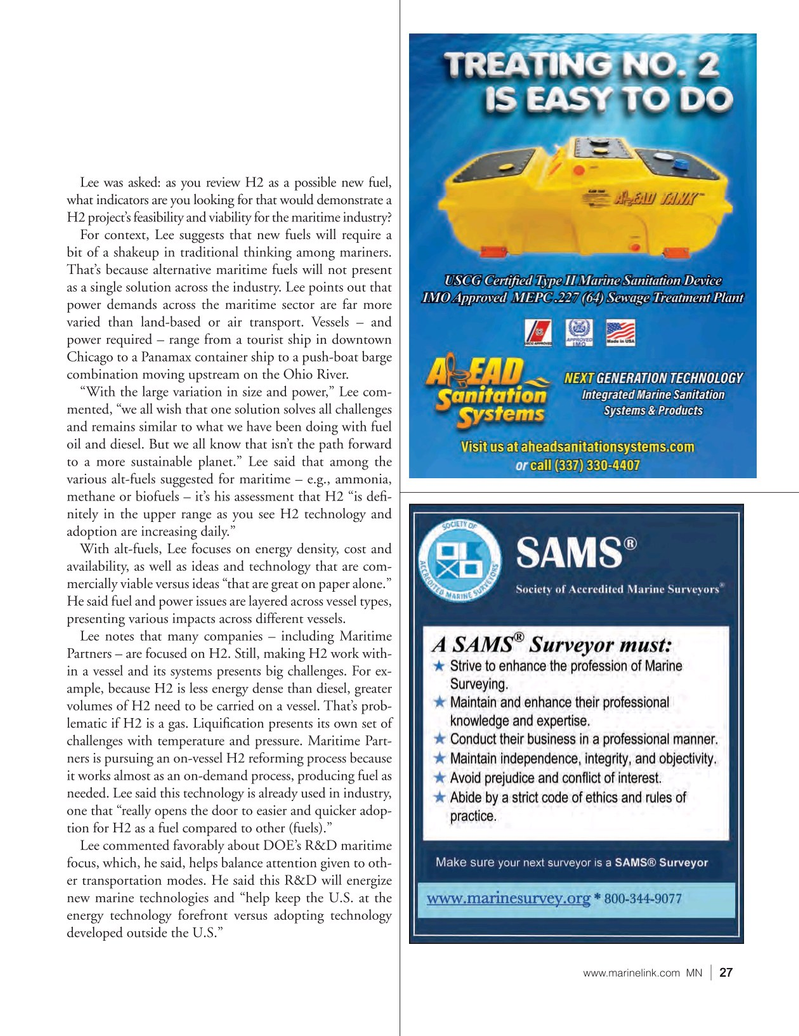
Page 27: of Marine News Magazine (October 2023)
Offshore Energy
Read this page in Pdf, Flash or Html5 edition of October 2023 Marine News Magazine
Lee was asked: as you review H2 as a possible new fuel, what indicators are you looking for that would demonstrate a
H2 project’s feasibility and viability for the maritime industry?
For context, Lee suggests that new fuels will require a bit of a shakeup in traditional thinking among mariners.
That’s because alternative maritime fuels will not present as a single solution across the industry. Lee points out that power demands across the maritime sector are far more varied than land-based or air transport. Vessels – and power required – range from a tourist ship in downtown
Chicago to a Panamax container ship to a push-boat barge combination moving upstream on the Ohio River.
“With the large variation in size and power,” Lee com- mented, “we all wish that one solution solves all challenges and remains similar to what we have been doing with fuel oil and diesel. But we all know that isn’t the path forward to a more sustainable planet.” Lee said that among the various alt-fuels suggested for maritime – e.g., ammonia, methane or biofuels – it’s his assessment that H2 “is de? - nitely in the upper range as you see H2 technology and adoption are increasing daily.”
With alt-fuels, Lee focuses on energy density, cost and availability, as well as ideas and technology that are com- mercially viable versus ideas “that are great on paper alone.”
He said fuel and power issues are layered across vessel types, presenting various impacts across different vessels.
Lee notes that many companies – including Maritime
Partners – are focused on H2. Still, making H2 work with- in a vessel and its systems presents big challenges. For ex- ample, because H2 is less energy dense than diesel, greater volumes of H2 need to be carried on a vessel. That’s prob- lematic if H2 is a gas. Liqui? cation presents its own set of challenges with temperature and pressure. Maritime Part- ners is pursuing an on-vessel H2 reforming process because it works almost as an on-demand process, producing fuel as needed. Lee said this technology is already used in industry, one that “really opens the door to easier and quicker adop- tion for H2 as a fuel compared to other (fuels).”
Lee commented favorably about DOE’s R&D maritime focus, which, he said, helps balance attention given to oth- er transportation modes. He said this R&D will energize new marine technologies and “help keep the U.S. at the energy technology forefront versus adopting technology developed outside the U.S.” www.marinelink.com MN 27|

 26
26

 28
28
